This post may contain affiliate links. See my disclosure policy.
My easy protein bagels need just three ingredients to make and pack over 30 grams of protein each. They are soft and fluffy on the inside, while being crisp and golden on the outside.
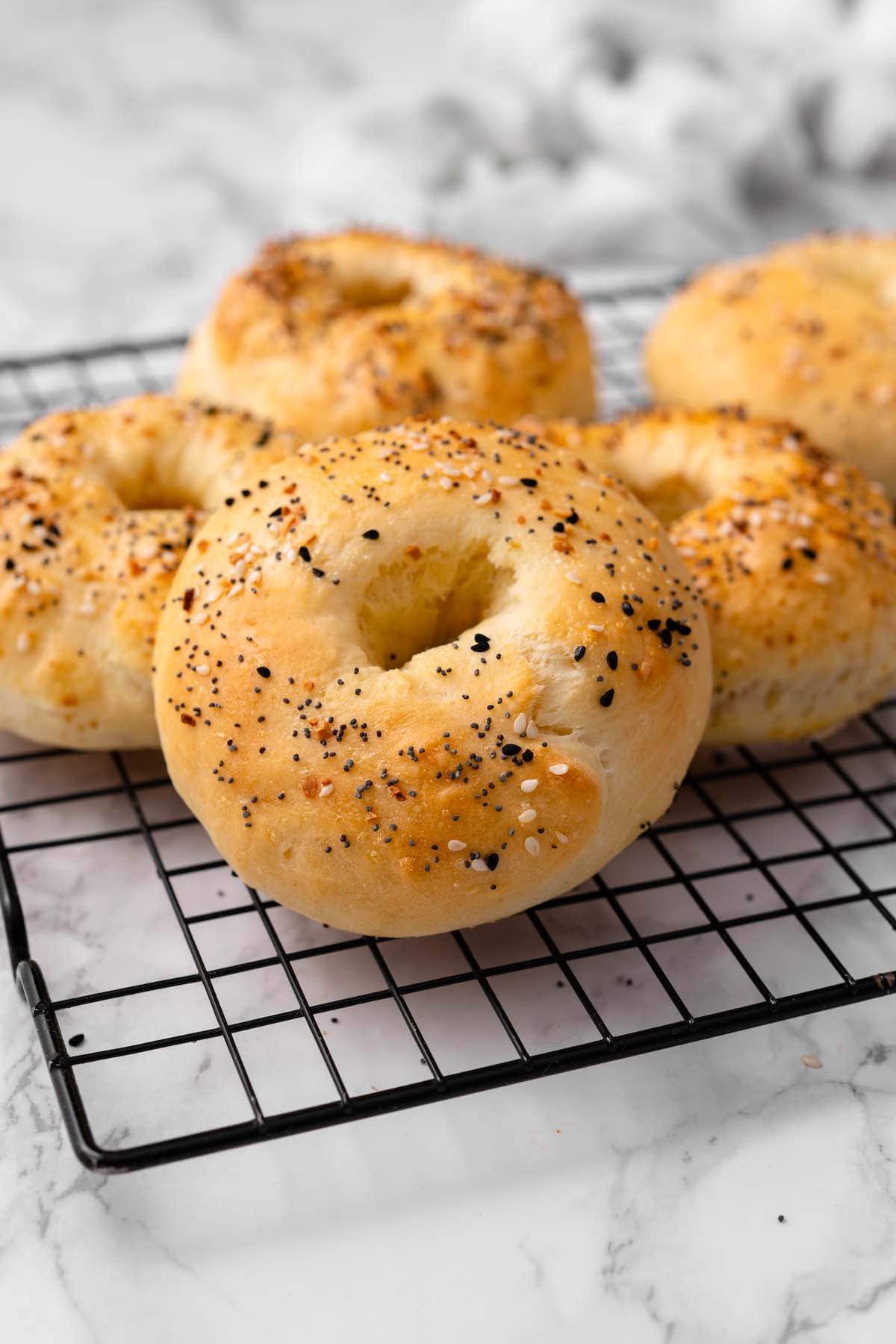
I’m always finding ways to sneak in extra protein to my classic recipes, and these high protein bagels have become a breakfast staple. I’ve adapted my 2 ingredient bagels to be super high in protein while actually tasting like a bagel! They are golden and fluffy and are ridiculously easy to make. Seriously, whip them up on a whim and have a batch of warm bagels!
Table of Contents
Why I love this recipe
- Quick and easy. This recipe takes under 20 minutes to prepare from start to finish. They also have no yeast.
- Super high in protein. Like cottage cheese bagels, each bagel contains over 30 grams, but I’ve included a variety of options to amp it up even further.
- No fancy mixers or kitchen gadgets. All you need is one mixing bowl and a mixing spoon.
- Customizable. Keep them plain with sesame seeds to try a plethora of topping ideas.
If you love a high protein breakfast like we do, try my protein pancakes, protein waffles, or protein oatmeal next.
★★★★★ REVIEW
“Great recipe. 😊 I sprinkled them with everything but the bagel seasoning and served them with mashed avocado & a tiny bit of lime juice. Absolutely delicious, great breakfast.” – Mj Armstrong
Key Ingredients
- Protein flour. An enriched self-rising flour with added protein. I used Vetta protein flour, which has 21 grams of protein per serving. If you can’t find protein flour, standard self rising flour can be used.
- Protein powder. I like to swap out half the flour for protein powder to amp up the protein even more. Plain casein protein or brown rice protein is best, as whey can thin out the dough too much. If you don’t want to use protein powder, just use more flour.
- Greek yogurt. I like using non-fat Greek yogurt, which has over 21 grams of protein per half cup. I used a full cup in this recipe, which provides 42 grams of protein. 2% or 4% Greek yogurt also works, and the protein content will be even higher (although the fat content increases slightly).
- Egg or egg white. Brushing the tops of the bagels will give them that gorgeous shine and extra crispness.
- Bagel toppings. Sesame seeds, poppy seeds, sea salt, garlic powder, onion powder, and everything but the bagel seasoning.
How to make protein bagels
This is an overview with step-by-step photos. Full ingredients & instructions are in the recipe card below.
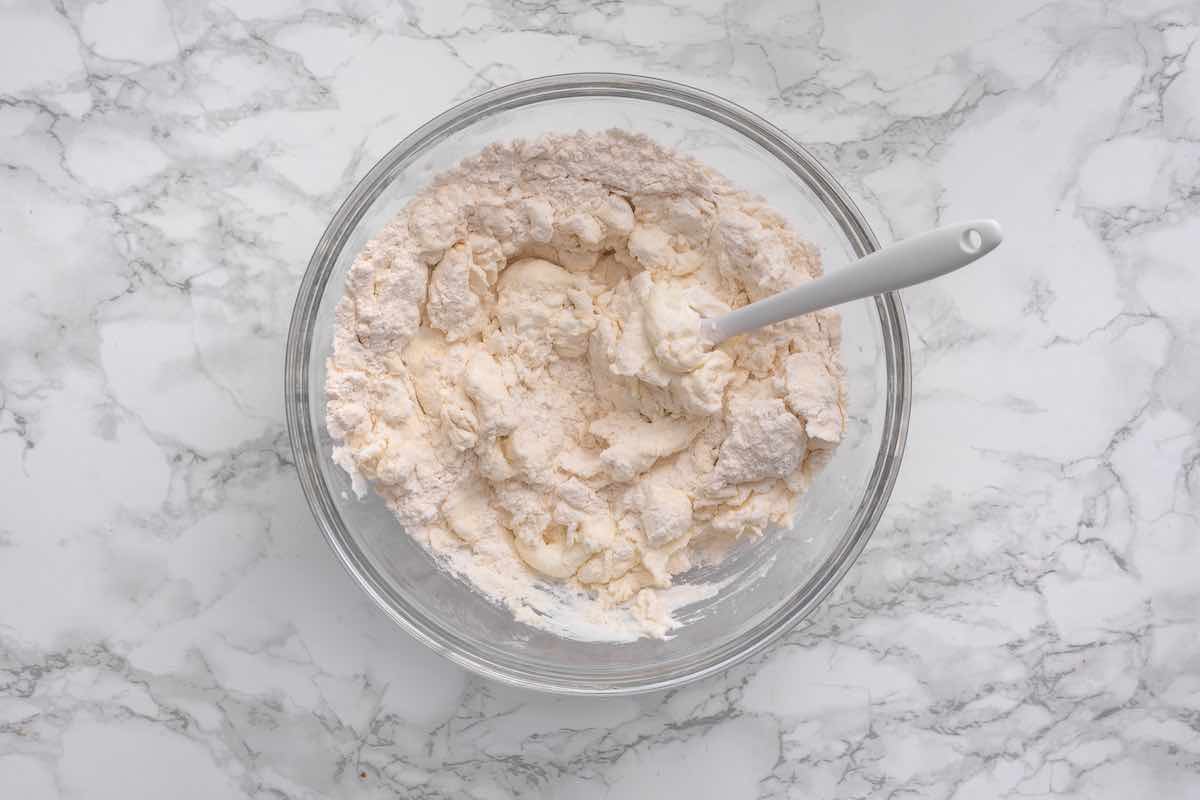
Step 1- Combine. In a mixing bowl, add the flour and Greek yogurt.
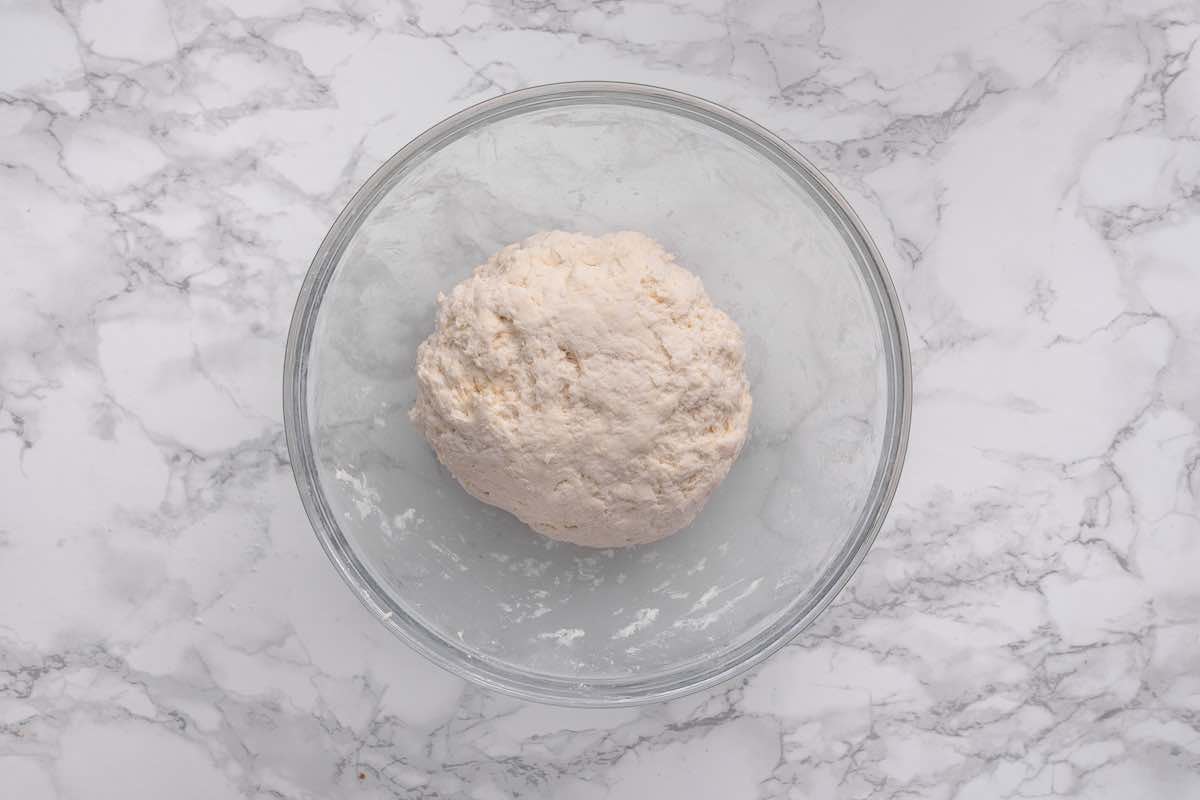
Step 2- Mix. Gently mix the dough until smooth.

Step 3- Roll. Transfer the dough onto a floured surface. Divide the dough into eight equal pieces and roll them into thin logs.
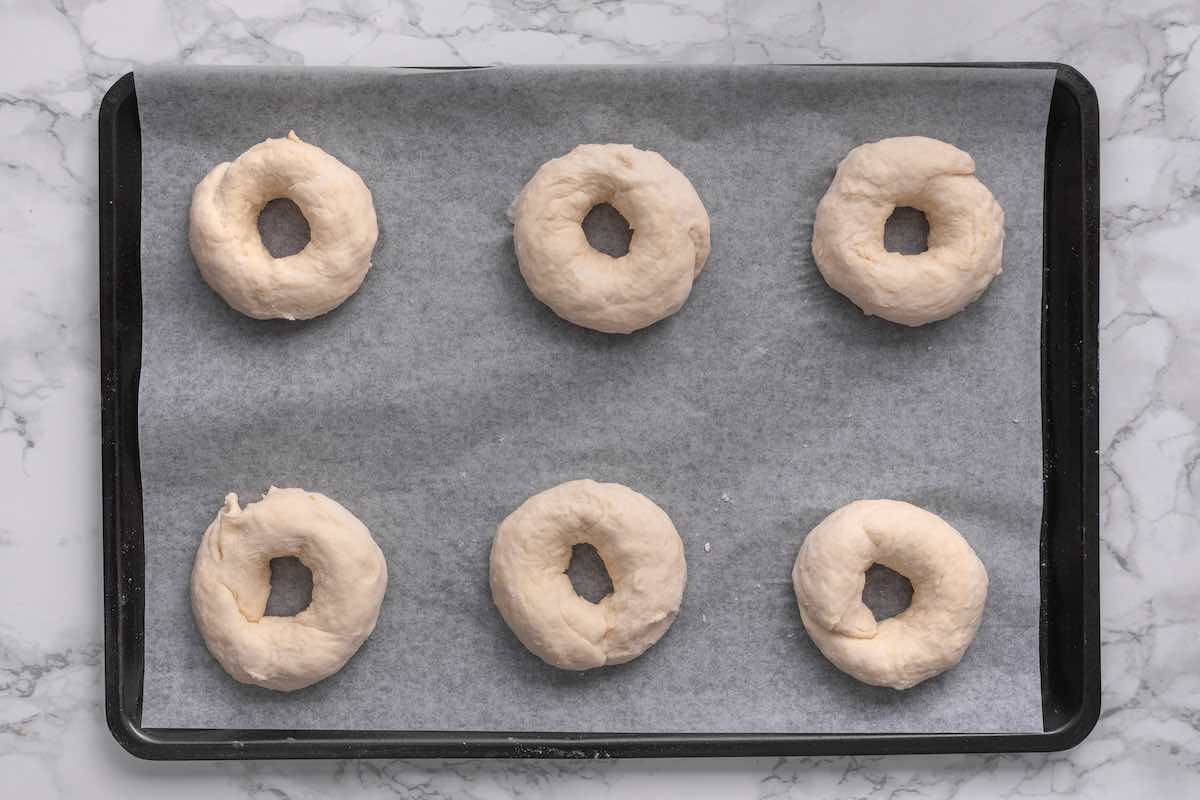
Step 4- Shape the dough into bagels.
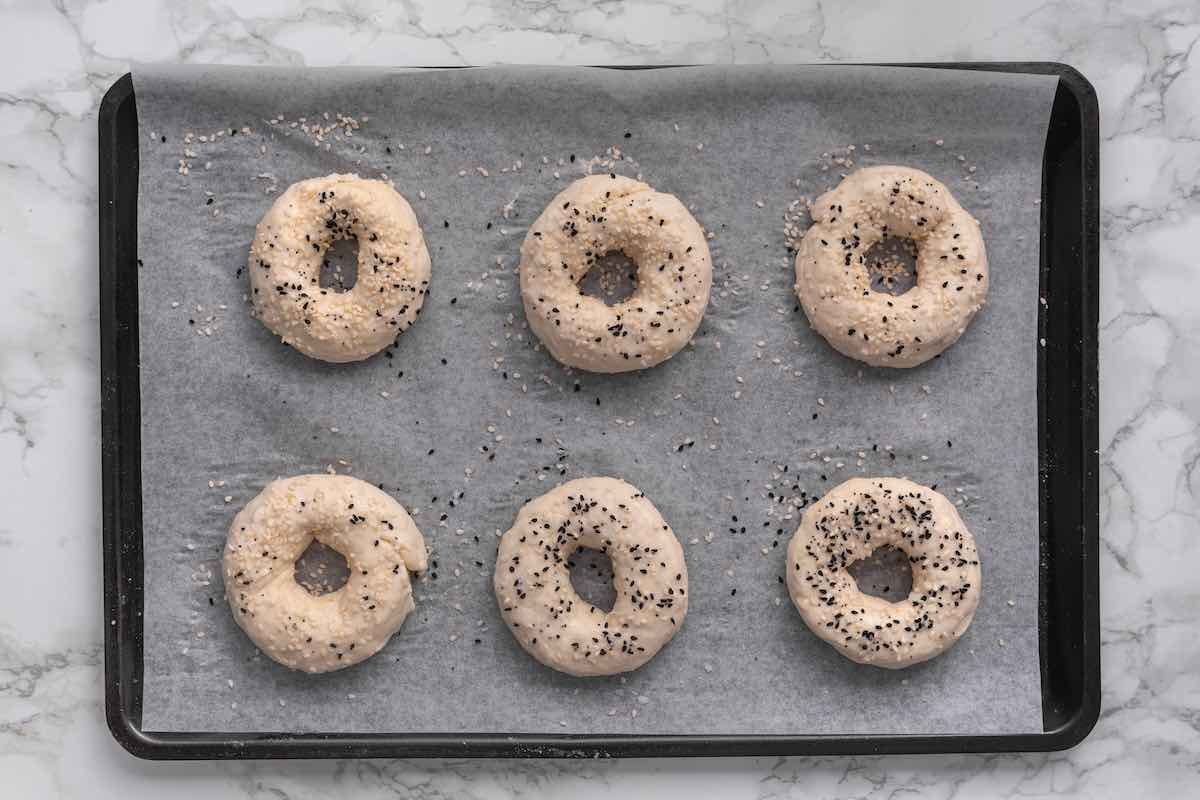
Step 5- Top. Brush the bagels with egg and sprinkle toppings.
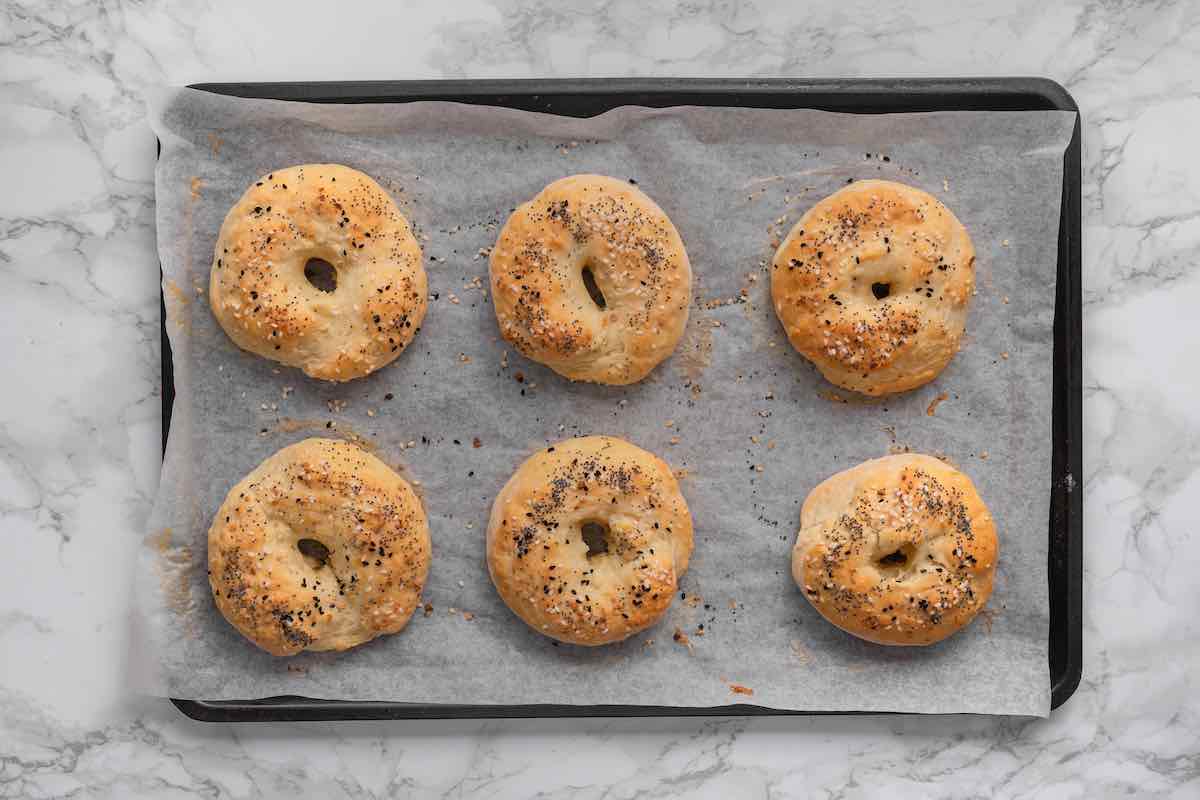
Step 6- Bake the bagels for 20 minutes or until golden brown on the outside.
Arman’s recipe tips
- Get the right consistency. If your dough is too dry, add a bit more Greek yogurt to it. if it’s too wet, I find a sprinkling of flour does the trick.
- Always knead the dough. While these bagels don’t use yeast, kneading them properly will ensure a smooth exterior and make them easier to form. I find 3-4 minutes to be plenty of time.
- Shape the bagels correctly. Stretch the dough once you’ve added a hole to the center, and ensure it is large enough. This typically shrinks during the baking process.
- Cool before slicing. I know it’s tempting, but let the bagels rest for a few minutes before slicing in half. This prevents them from breaking or tearing.
Serving ideas
While the Greek yogurt and protein-enriched flour add a hefty dose of protein, you can amp it up even more with a few tricks when it comes to serving them.
- Cheese. Cheddar, tasty, American, and Pepper jack cheese all pack in 7-10 grams of protein per slice. Cream cheese also provides 2-3 grams per tablespoon.
- Nut and seed butter. Almond butter, honey peanut butter, and sunflower seed butter all have at least 6 grams of protein per two tablespoons.
- Spreads and dips. Hummus, tzatziki, and avocado all have between 3-5 grams of protein per serving.
- Eggs. Cottage cheese egg salad, air fryer soft boiled eggs, or an over easy egg in the middle will amp up the protein and add healthy fats.
- Meat, poultry, and seafood. Smoked salmon, grilled chicken, healthy tuna salad, and air fryer turkey bacon are some of my favorite fillings.
Storage instructions
To store: Leftover bagels can be stored at room temperature, covered, for up to 3 days.. If you’d like to keep them longer, store them in the refrigerator.
To freeze: Place cooled bagels in a ziplock bag and store them in the freezer for up to six months.
Reheating: Slice the bagels in half and toast them before adding your favorite spreads and/or fillings.
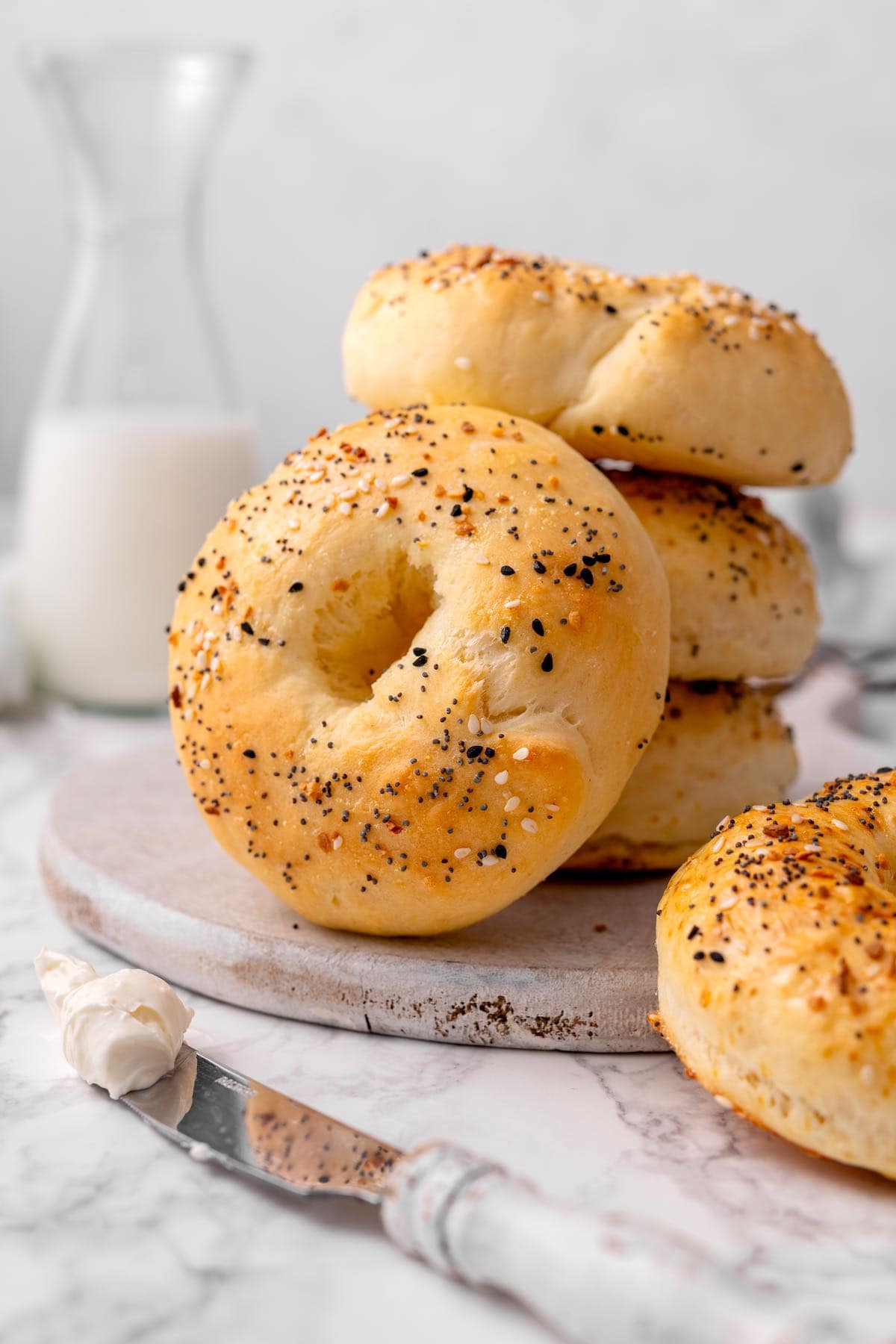
Frequently asked questions
No, you don’t need to use the protein powder. You can just swap it out for more self-rising flour. The protein content will lower to 12 grams per bagel.
Yes, absolutely. While Greek yogurt provides the most protein, any plain or dairy-free yogurt will work. You’ll just have to adjust the consistency a little bit to compensate (e.g., more flour or more yogurt).
Easily make your own self-rising flour by combining 1 cup of all-purpose flour with 1 1/2 teaspoons baking powder and 1/4 teaspoon of salt.
If you tried this Protein Bagels recipe or any other recipe on The Big Man’s World, please rate the recipe and let me know how it went in the comments below. It really helps others thinking of making the recipe.
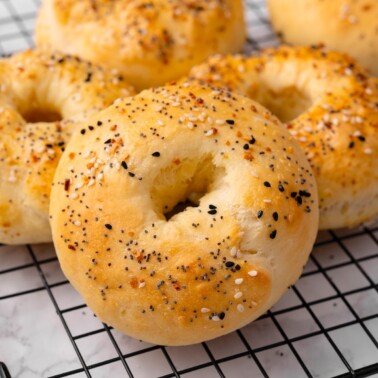
Protein Bagels
Video
Ingredients
- 1/2 cup Self rising flour * See notes
- 1/2 cup Unflavored protein powder ** See notes
- 1 cup Greek yogurt non-fat
- 1 large egg white
Instructions
- Preheat the oven to 180C/350F. Line a large baking sheet with parchment paper.
- In a mixing bowl, combine the self-rising flour, protein powder, and yogurt, mixing until well incorporated. Using your hands, gently knead together until smooth. If the dough is too thick, add more flour. If the dough is too thin, add a little more yogurt.
- Transfer the dough onto a floured surface. Divide the dough into eight equal portions and shape each portion into bagels. Place them on the lined baking sheet and brush with egg white. Sprinkle with your favorite bagel toppings.
- Bake the bagels for 15-17 minutes, or until golden brown on top. Remove the bagels from the oven and let them sit for a few minutes before slicing and serving.
Notes
Nutrition
Originally published December 2021, updated and republished April 2025














Excellent! Thank you.
Gluten free recipes I am looking for
Came out great. I eat them with hummus and it’s so good!
These were super easy and tasty. Thanks for these kinds of recipes.
Took me a while to figure out the best size to make these but i love them now that i have the hang of it. thank you.
What recommendations for brands do you have for protein powder and flour? I’m having a hard time finding protein flour and non-whey protein powder. Thank you!
Egg white protein is great for baking 🙂
Great recipe. 😊
I sprinkled them with everything but the bagel seasoning and served them with mashed avocado & a tiny bit of lime juice.
Absolutely delicious great breakfast.
I’m sensitive to whey, so can I use beef gelatin powder as my protein powder?
Do you think I use a vegan coconut yogurt instead of green yogurt? Since I don’t do dairy.
Sure can!